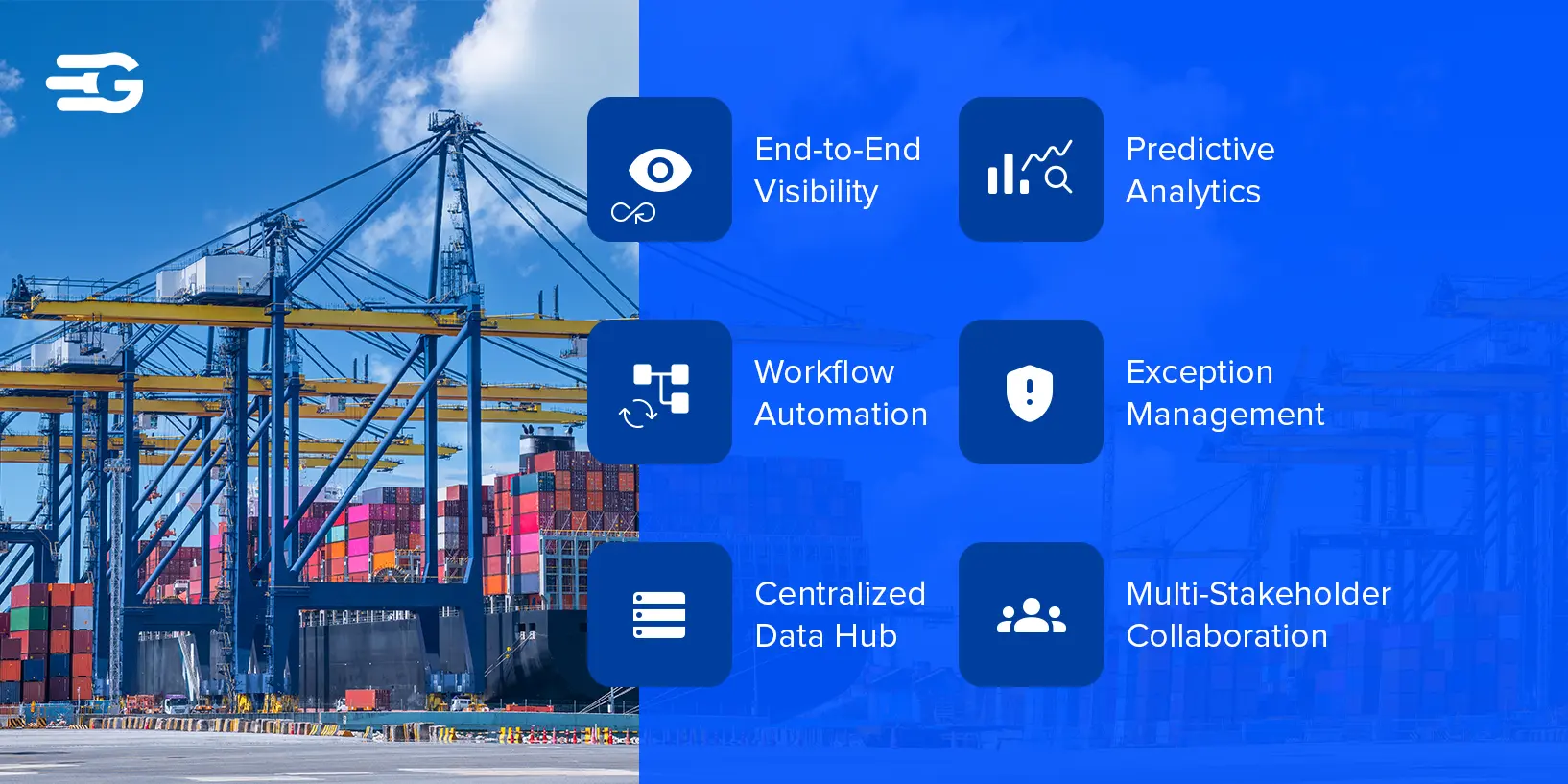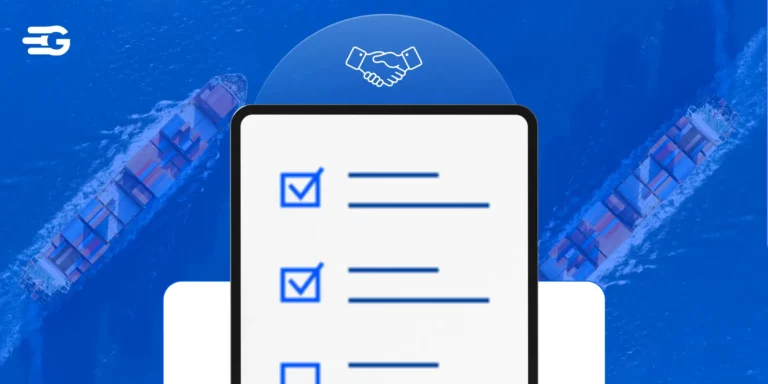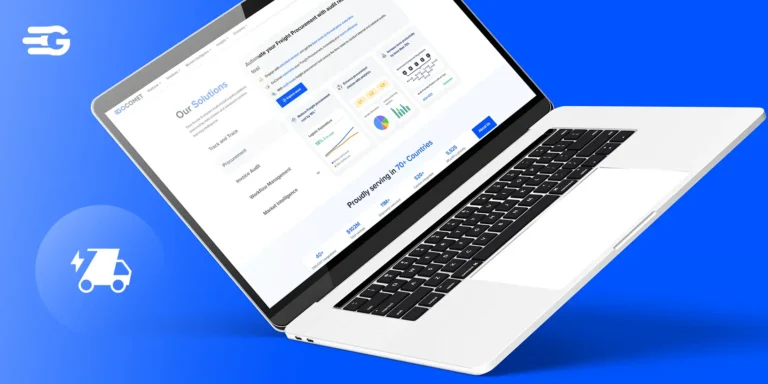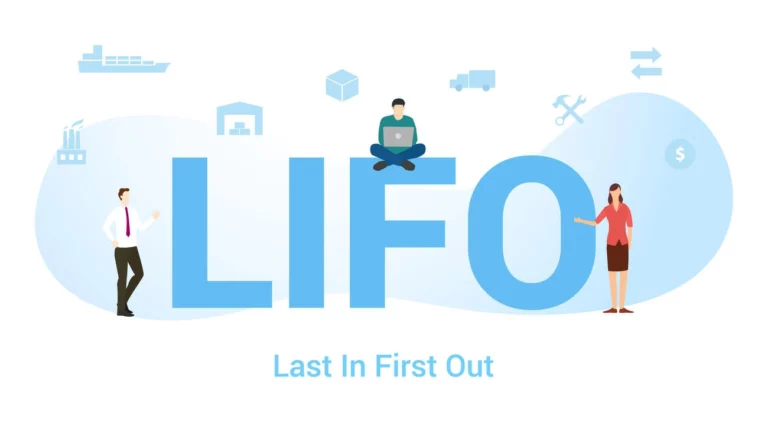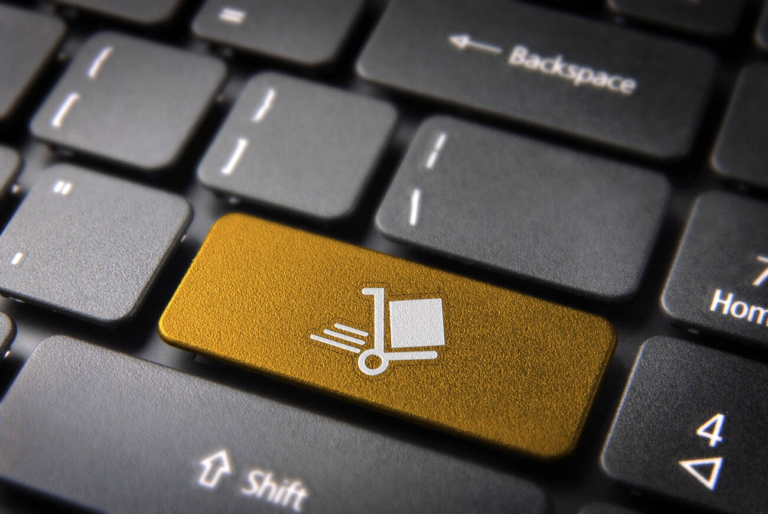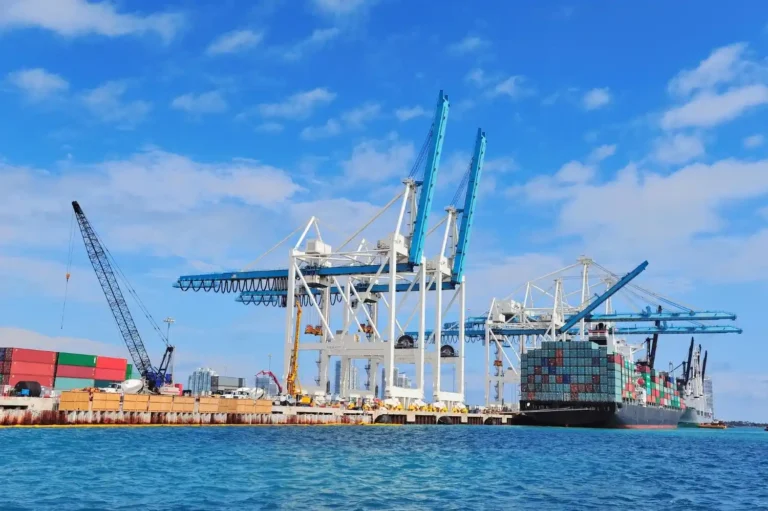How a Logistics Control Tower (LCT) Improves End-to-End Supply Chain Visibility
In an era where global supply chains are more complex and interconnected than ever, achieving complete visibility across every stage of the process is crucial. Disruptions like port congestion and weather delays can have significant financial and operational impacts. That’s where a Logistics Control Tower (LCT) comes in. An LCT serves as the central nervous system of your supply chain, offering real-time monitoring, comprehensive data integration, and proactive management to keep operations running smoothly.
What Is a Logistics Control Tower?
A Logistics Control Tower is not just a monitoring system, it is a digital platform that consolidates data from various sources, such as transportation and warehouse management systems to IoT sensors and ERP applications. The goal is to present a clear, real-time picture of all supply chain activities in one accessible location. This holistic view enables businesses to spot disruptions early, analyze trends, and coordinate responses effectively.
Industry experts describe a control tower as the operational hub that enhances visibility by breaking down the silos that often exist between different parts of the supply chain. By integrating data from both legacy systems and modern cloud-based applications, an LCT provides end-to-end oversight that is essential for today’s complex logistics operations.
The Value of End-to-End Visibility
Achieving complete visibility in the supply chain has become a top priority for companies striving to maintain a competitive edge. Here’s why this should matter to your business:
Real-Time Monitoring
Real-time data is at the heart of any effective control tower. With an LCT, you can track shipments, inventory levels, and production status across every leg of your supply chain. This continuous monitoring enables you to detect issues and have faster response times. For example, if a shipment is delayed due to adverse weather conditions or unexpected congestion at a port, you can quickly implement contingency plans to mitigate the impact.
Proactive Issue Resolution
Traditional systems often react to problems only after they have occurred. In contrast, an LCT leverages advanced analytics and automated alerts to identify potential issues before they escalate. By recognizing patterns that might indicate a looming disruption—such as a consistent delay in a particular route—the system empowers you to take proactive measures. This proactive approach not only minimizes downtime but also prevents minor hiccups from snowballing into major setbacks.
Comprehensive Data Integration
Supply chains today operate across multiple platforms and technologies. Data is often scattered across various systems, making it challenging to gain a unified perspective. A robust LCT integrates disparate data sources, providing a consolidated dashboard that covers everything from transportation details to inventory status and customer orders. This integration ensures that no critical piece of information is overlooked and that all stakeholders have access to the same real-time data.
Enhanced Collaboration Across Stakeholders
A significant benefit of a centralized control tower is the facilitation of communication between different departments and external partners. When procurement teams, warehouse managers, and transportation providers operate from a single source of truth, collaboration improves significantly. This enhanced collaboration ensures that all parties are aligned, leading to faster decision-making and more coordinated responses during disruptions.
Key Features of an Effective Logistics Control Tower
To truly harness the benefits of an LCT, certain features are essential. Let’s explore the key components that contribute to its effectiveness:
1. Real-Time Data Consolidation
An effective LCT aggregates data from a wide range of sources, including:
- Transportation Management Systems (TMS): Capturing data on shipment status, carrier performance, and route efficiency.
- Warehouse Management Systems (WMS): Monitoring inventory levels and distribution metrics.
- IoT Sensors and GPS Devices: Providing location tracking and environmental monitoring.
- Enterprise Resource Planning (ERP) Systems: Integrating financial, operational, and human resource data.
This real-time consolidation creates a dynamic picture of your supply chain, enabling timely interventions when anomalies occur.
2. Advanced Predictive Analytics
Leveraging machine learning and predictive analytics is a game changer in supply chain management. By analyzing historical and current data, an LCT can forecast potential issues such as delays, demand spikes, or bottlenecks. For instance, if an algorithm identifies that shipments from a specific region are consistently delayed during certain weather conditions, it can trigger alerts and suggest alternative routes.
Recent reports indicate that companies using predictive analytics see significant improvements in on-time deliveries and overall operational efficiency. This data-driven foresight is invaluable for making strategic adjustments that reduce costs and improve service levels.
3. Automated Exception Management
Despite the best planning, disruptions are inevitable. An LCT’s automated exception management tools are designed to detect and flag any deviations from planned operations. These tools can:
- Trigger Alerts: Instantly notify relevant teams about unexpected delays or disruptions.
- Provide Remediation Suggestions: Recommend corrective actions based on historical outcomes and current conditions.
- Enable Rapid Communication: Facilitate immediate contact between teams to address issues as they arise.
This level of automation ensures that your supply chain remains resilient, even when faced with unforeseen challenges.
4. Seamless Integration with Existing Systems
One of the biggest challenges in modern logistics is connecting new digital tools with legacy systems. A well-designed LCT bridges this gap by seamlessly integrating with both old and new technologies. This interoperability not only protects existing investments but also allows for a gradual transition to a more modern, agile supply chain model.
By offering APIs and data connectors, an LCT makes it easy to incorporate data from various platforms, ensuring a cohesive and comprehensive view of all operations.
5. Scalable and Customizable Solutions
No two supply chains are alike. An effective LCT must be flexible enough to adapt to the unique needs of your business. This means:
- Modular Design: Enabling you to add or remove features as your business evolves.
- Customizable Dashboards: Allowing each stakeholder to view the data that matters most to them.
- Scalable Architecture: Ensuring that the system can grow alongside your business without requiring a complete overhaul.
This scalability and customization ensure that your control tower remains relevant and valuable as your operations expand.
6. Enhanced Collaboration and Decision Support
A centralized LCT acts as a collaborative hub where stakeholders across the supply chain can share insights and make collective decisions. By providing a unified platform, the LCT helps to:
- Align Operational Goals: Ensure that every department is working towards the same objectives.
- Facilitate Information Sharing: Promote transparency and timely communication.
- Improve Strategic Planning: Offer decision-makers a clear view of current performance and future forecasts.
This collaborative environment leads to more informed, agile decisions that drive overall supply chain efficiency.
GoComet’s Supply Chain Control Tower
At GoComet, our Supply Chain Control Tower is a modern, cloud-based solution engineered to bring clarity and agility to your logistics operations. By integrating real-time data from diverse sources, it offers a centralized dashboard that delivers end-to-end visibility across your entire supply chain. This means you can track shipments, identify potential disruptions, and manage exceptions swiftly—all from one unified platform.
- Proactive Exception Management: The system not only flags deviations but also suggests corrective measures based on historical data, helping to minimize delays and maintain consistent service levels.
- Scalability and Customization: Whether you’re managing local routes or an expansive global network, our control tower scales with your business. Customizable dashboards allow each user to access the data most relevant to their role, ensuring everyone from operations managers to customer service teams has the insights they need.
- Seamless Integration: Our solution effortlessly integrates your existing ERP, TMS, and WMS systems, breaking down data silos and providing a holistic view of your logistics operations. This compatibility enables a smooth transition without disrupting your current processes.
- Enhanced Collaboration: With a single source of truth, cross-functional teams can collaborate more effectively, ensuring that all stakeholders are aligned and informed—ultimately leading to more agile and data-driven decision-making.
Data-Driven Impact and Industry Trends
Industry research underscores the transformative potential of Logistics Control Towers. A recent study by Reuters noted that approximately 70% of logistics companies are expected to invest in control tower solutions by 2025. This trend is driven by the clear benefits of enhanced visibility, improved operational efficiency, and reduced risk. Moreover, data shows that companies implementing control towers have experienced significant improvements in delivery times and cost savings.
For example, firms that integrate predictive analytics with real-time monitoring have seen on-time delivery rates improve by as much as 20% compared to those using traditional methods. Additionally, businesses report that the ability to rapidly respond to exceptions not only minimizes disruptions but also builds greater customer trust through consistent performance.
These figures highlight a broader industry shift toward digital transformation in supply chain management—a movement that GoComet is proud to lead with our comprehensive end-to-end LCT solution.
Implementing a Successful LCT Strategy
Deploying a Logistics Control Tower requires careful planning and execution. Many companies adopt a phased or hybrid rollout strategy to ensure a smooth transition. This approach allows organizations to start with critical areas of their operations, refine the process based on initial feedback, and gradually extend the system’s capabilities across the entire supply chain.
Steps for a Successful Implementation:
- Evaluate Current Systems:
Begin by conducting a thorough assessment of your existing infrastructure. Identify the key areas where data silos exist and determine how an LCT can integrate with your current systems. - Develop a Roadmap:
Create a phased implementation plan that prioritizes high-impact areas. A hybrid rollout strategy can be particularly effective, enabling you to balance global oversight with localized control. - Invest in Training and Change Management:
Ensure that your team is prepared for the new system. Training sessions and ongoing support are critical to help employees adapt to new workflows and maximize the benefits of the LCT. - Leverage Data for Continuous Improvement:
Use the insights provided by your control tower to drive ongoing improvements. Regularly review performance data, adjust your strategies, and refine your processes to keep pace with evolving market conditions. - Scale Gradually:
As you begin to see the benefits of the LCT, expand its usage to cover additional functions or geographic regions. This gradual approach minimizes risk and helps you build confidence in the system.
By taking these steps, businesses can ensure that their Logistics Control Tower not only delivers immediate benefits but also serves as a scalable solution for long-term success.
A Logistics Control Tower offers a transformative approach to managing modern supply chains. With seamless integration, scalable solutions, and enhanced collaboration, companies can improve visibility, reduce costs, and enhance operational resilience.
At GoComet, our end-to-end LCT is designed to meet the challenges of today’s complex supply chain landscape by offering a robust, flexible, and data-driven solution that delivers real results.
Investing in a comprehensive control tower is no longer just an option—it’s a strategic imperative for companies looking to thrive in a competitive market. Embrace the power of end-to-end visibility and transform your supply chain into a resilient, agile operation ready to meet the demands of the future. Book a demo today!
